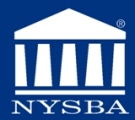In a New York construction accident case in which a worker suffered injury when he fell from a scaffold The Court rejected the recalcitrant worker defense. In Mazurett v. Rochester City School District, decided by The New York Appellate Division, 4th Department on October 7, 2011, the construction worker sustained injury when he fell from a collapsing scaffold at a construction site. In affirming the granting of summary judgment for the plaintiff on his 240(1) claim the Court rejected the defense that the plaintiff was a recalcitrant worker whose conduct was the sole proximate cause of the accident holding;
“Plaintiffs met their initial burden of establishing a prima facie violation of Labor Law § 240 (1). The fact that the scaffold collapsed “is sufficient to establish as a matter of law that the [scaffold] was not so ‘placed . . . as to give proper protection’ to plaintiff” pursuant to the statute (Dean v City of Utica, 75 AD3d 1130, 1131; see Tapia v Mario Genovesi & Sons, Inc., 72 AD3d 800, 801; see also Cantineri v Carrere, 60 AD3d 1331). In opposition to the motion, defendant failed to raise a triable issue of fact whether plaintiff’s “own conduct, rather than any violation of Labor Law § 240 (1), was the sole proximate cause of his accident” (Cahill v Triborough Bridge & Tunnel Auth., 4 NY3d 35, 40). We reject defendant’s contention that plaintiff was a recalcitrant worker whose own actions were the sole proximate cause of the accident. Although defendant submitted evidence that plaintiff was instructed to use a more stable scaffold and to use a ladder to ascend the scaffold, defendant failed to submit any evidence that plaintiff refused to use a particular scaffold or ladder that was provided to him. “The mere presence of [other safety devices] somewhere at the work site” does not satisfy defendant’s duty to provide appropriate safety devices (Zimmer v Chemung County Performing Arts, 65 NY2d 513, 524, rearg denied 65 NY2d 1054; see Williams v City of Niagara Falls, 43 AD3d 1426; Whiting v Dave Hennig, Inc., 28 AD3d 1105, 1106). Even assuming, arguendo, that plaintiff was negligent, we conclude that his own conduct cannot be deemed the sole proximate cause of the accident inasmuch as plaintiffs established that a statutory violation was a proximate cause of plaintiff’s injuries (see Blake v Neighborhood Hous. Servs. of N.Y. City, 1 NY3d 280, 290; Calderon v Walgreen Co., 72 AD3d 1532, appeal dismissed 15 NY3d 900).”
 Gair, Gair, Conason, Rubinowitz, Bloom, Hershenhorn, Steigman & Mackauf, a leading New York law firm, announces that it has been listed in six practice areas in the just released ranking of law firms by U.S. News Media Group, the publishers of U.S. News & World Report, and Best Lawyers®. This is the second edition of this highly-anticipated annual analysis.
Gair, Gair, Conason, Rubinowitz, Bloom, Hershenhorn, Steigman & Mackauf, a leading New York law firm, announces that it has been listed in six practice areas in the just released ranking of law firms by U.S. News Media Group, the publishers of U.S. News & World Report, and Best Lawyers®. This is the second edition of this highly-anticipated annual analysis. New York Personal Injury Attorneys Blog
New York Personal Injury Attorneys Blog






